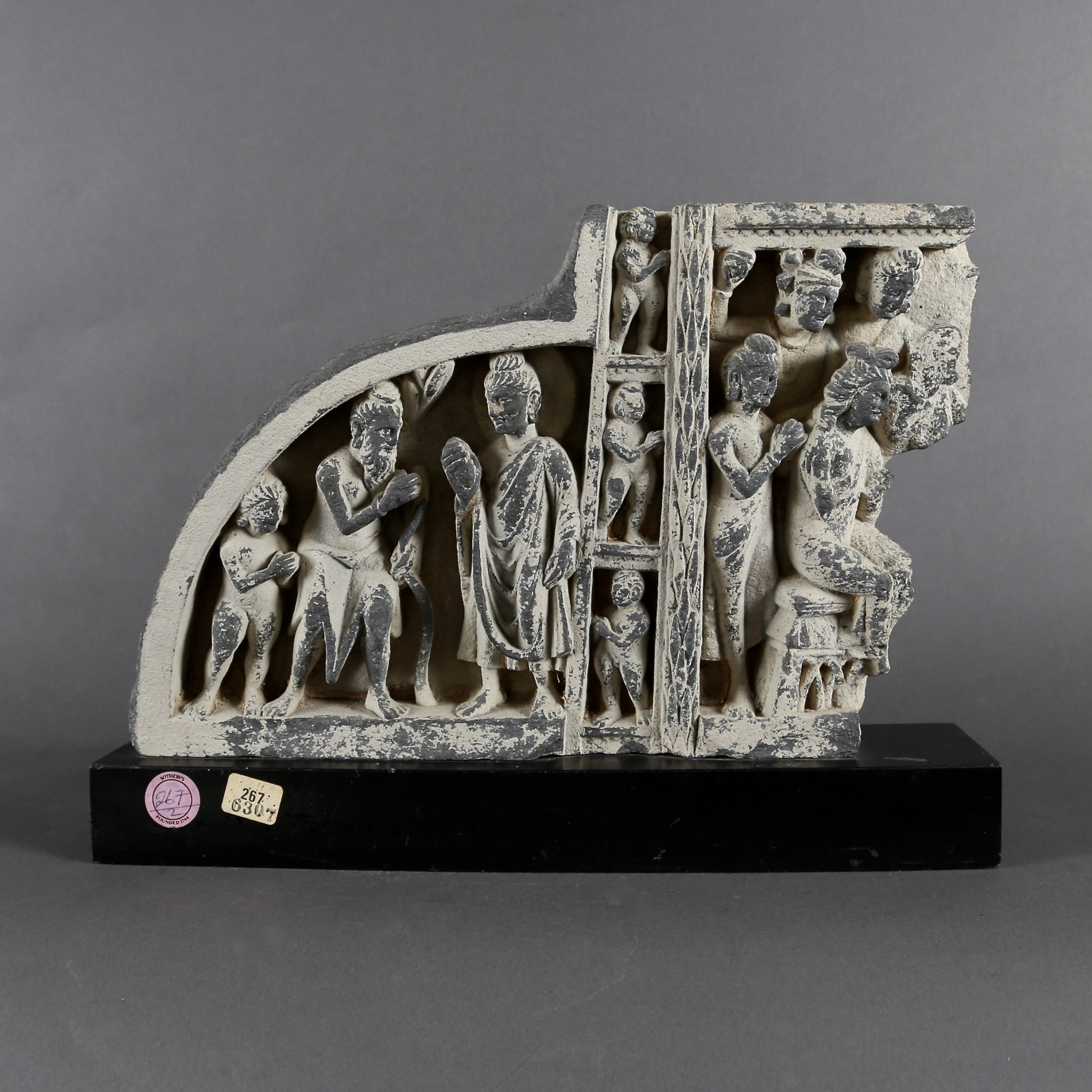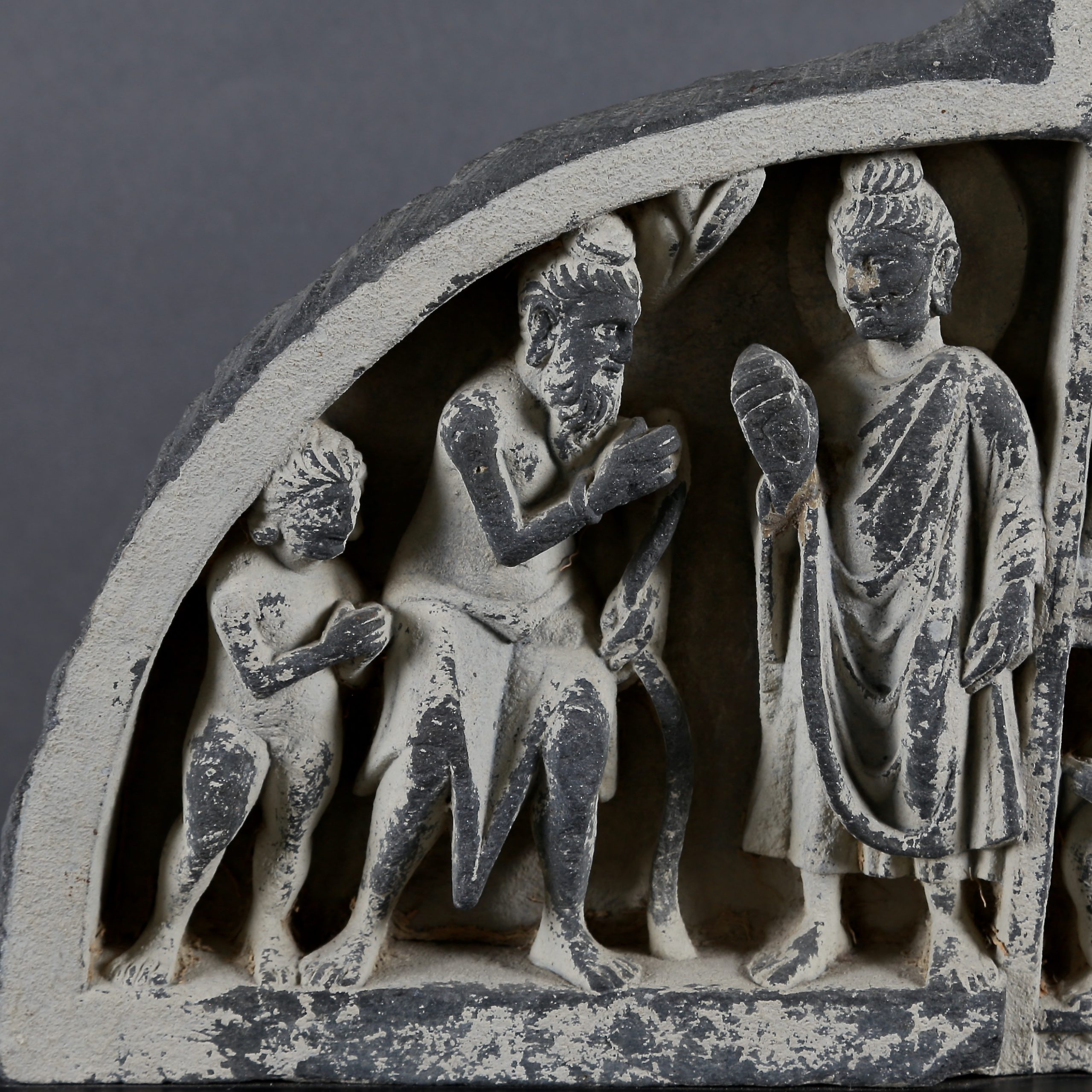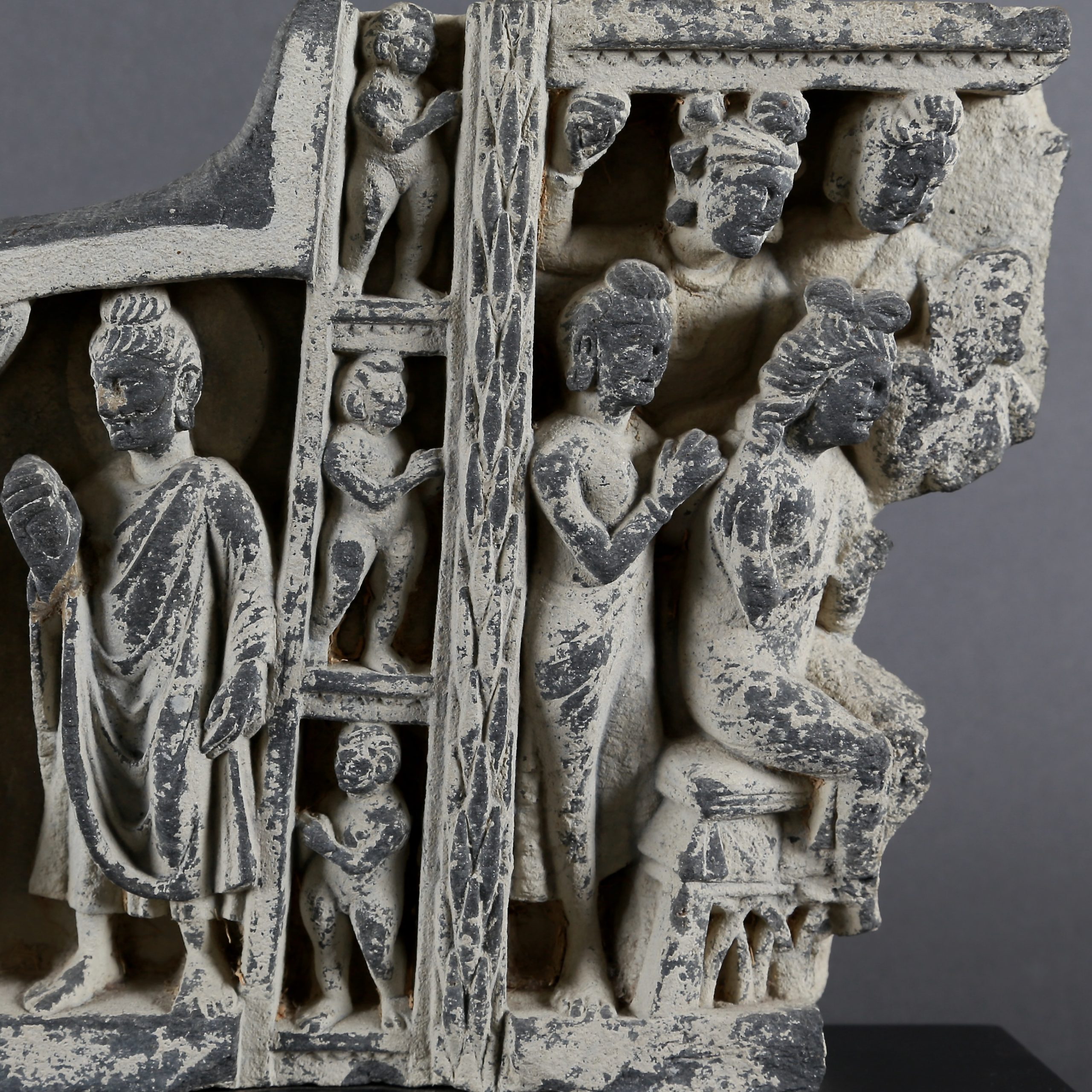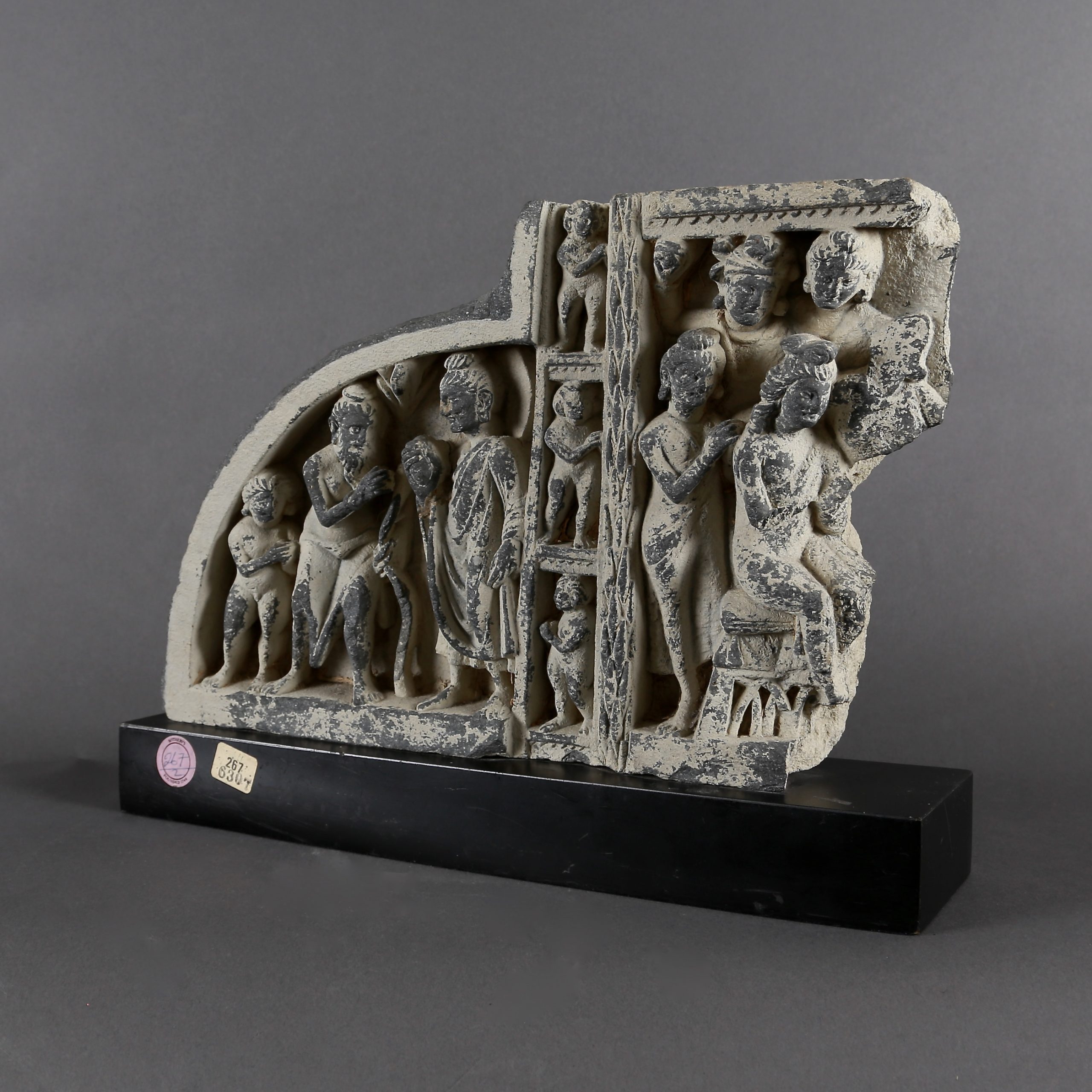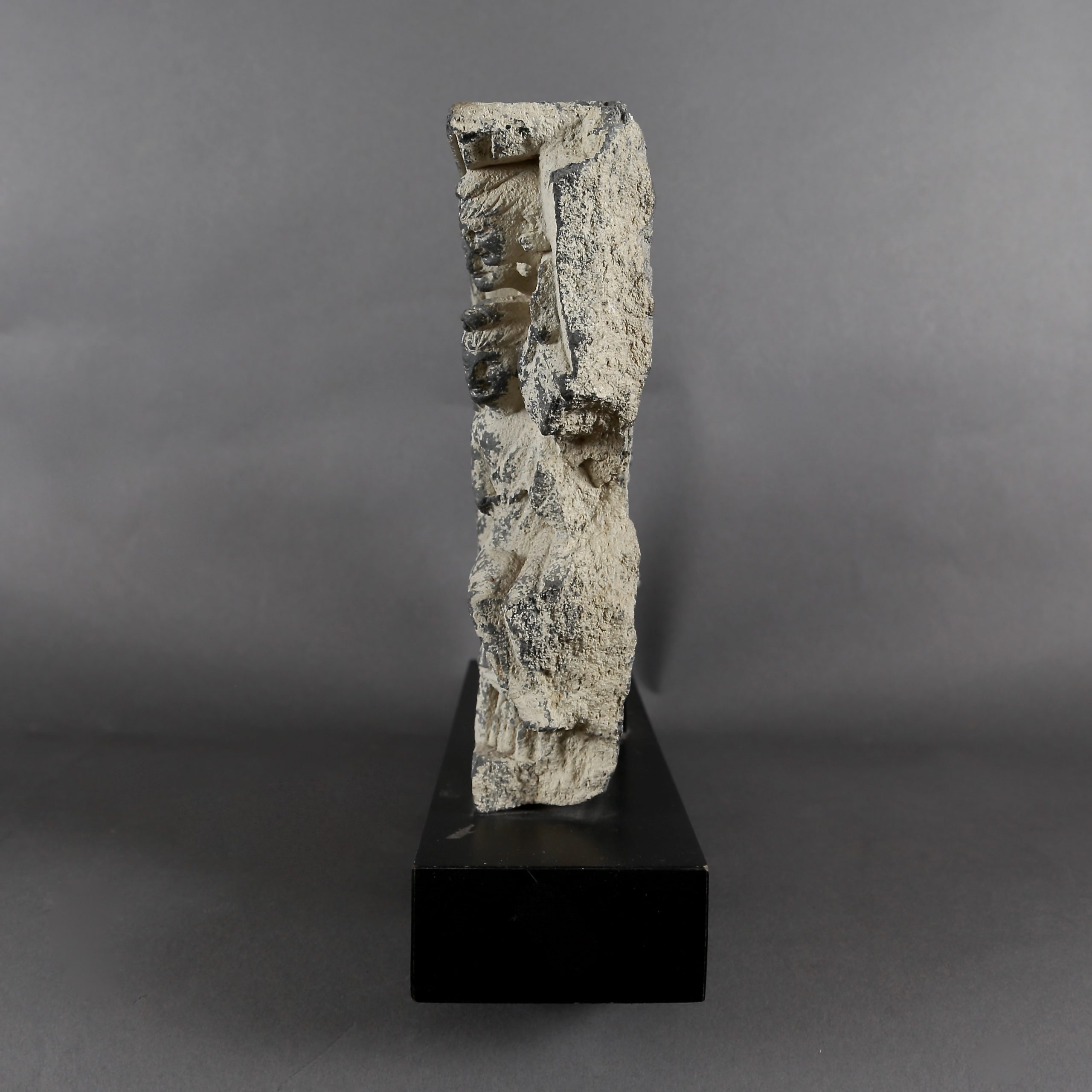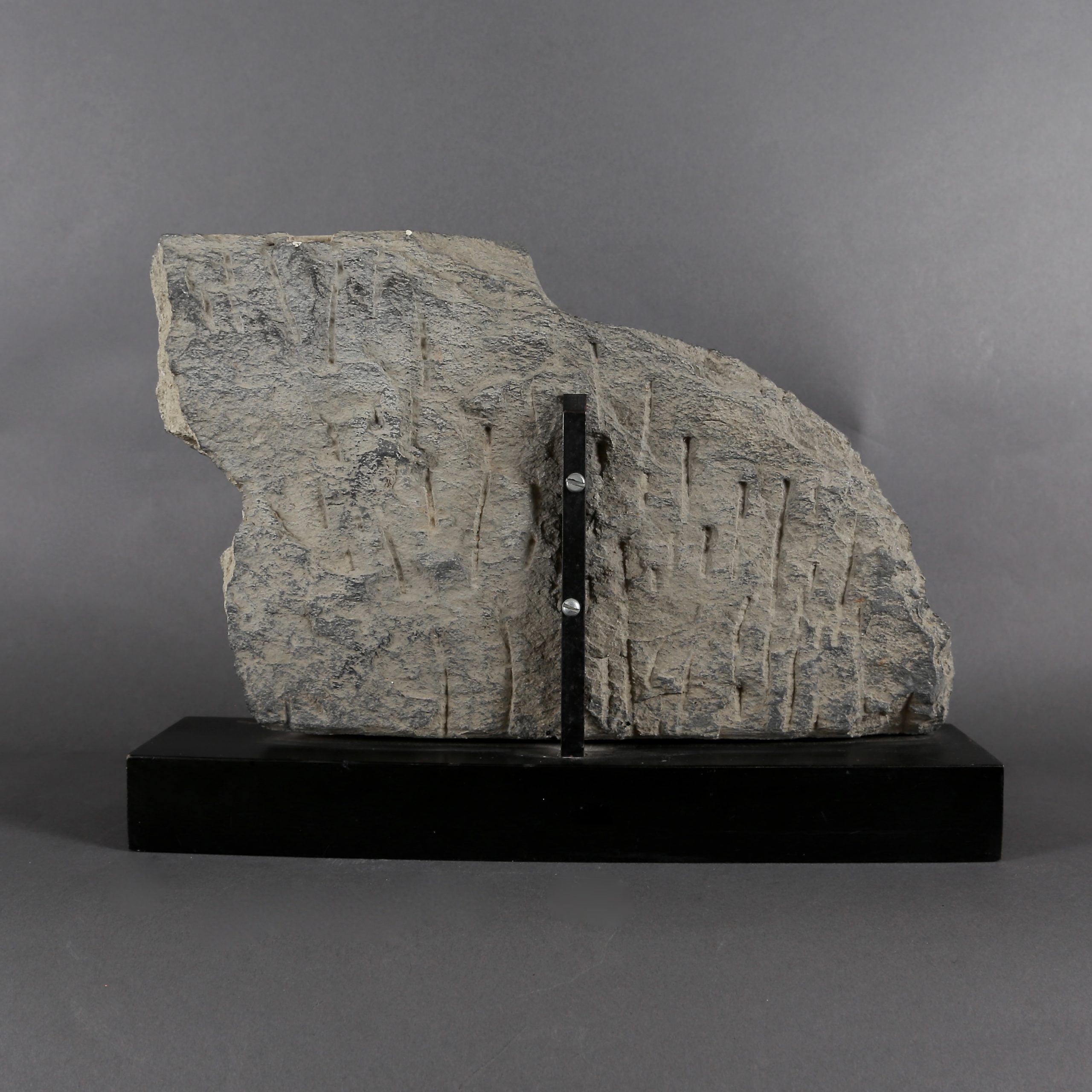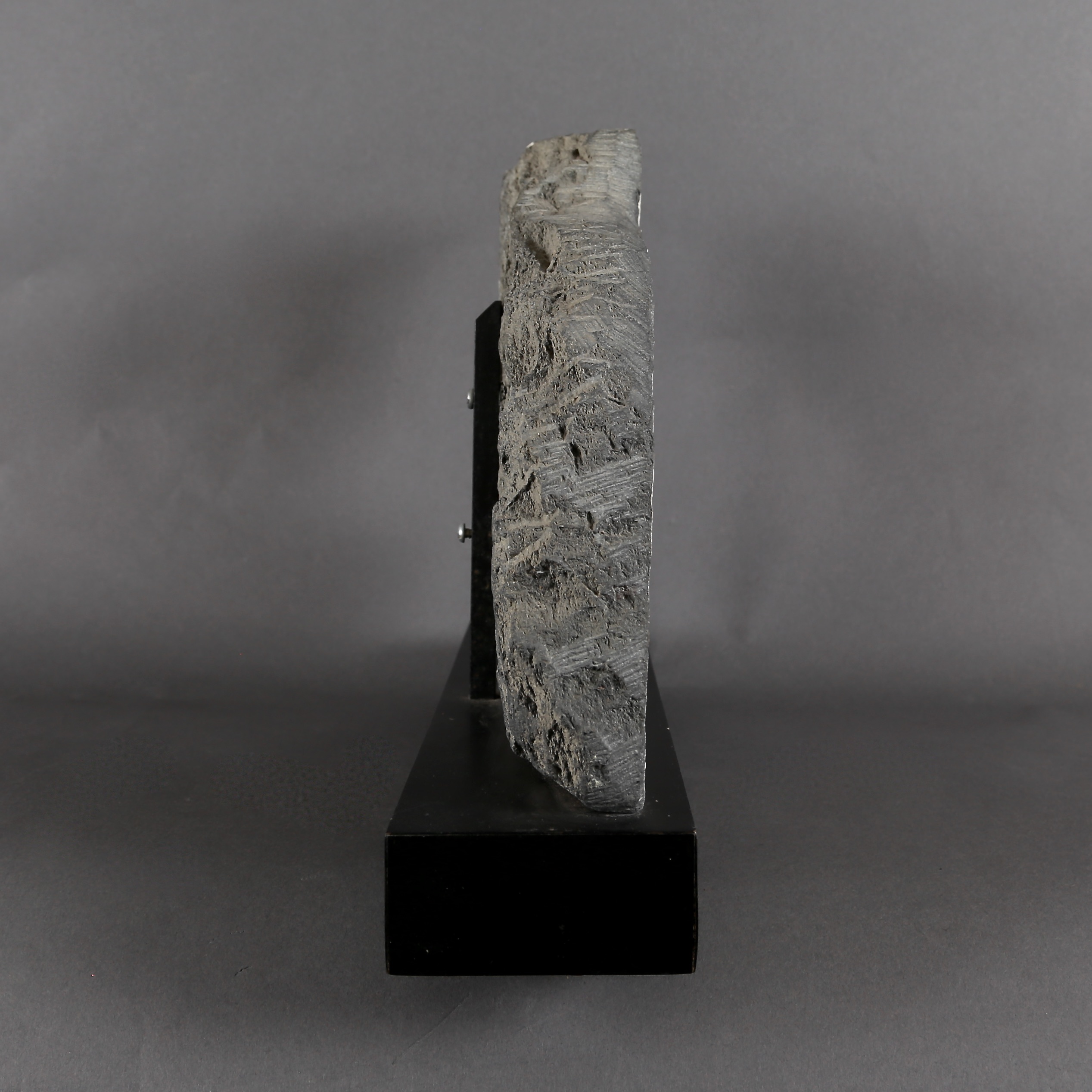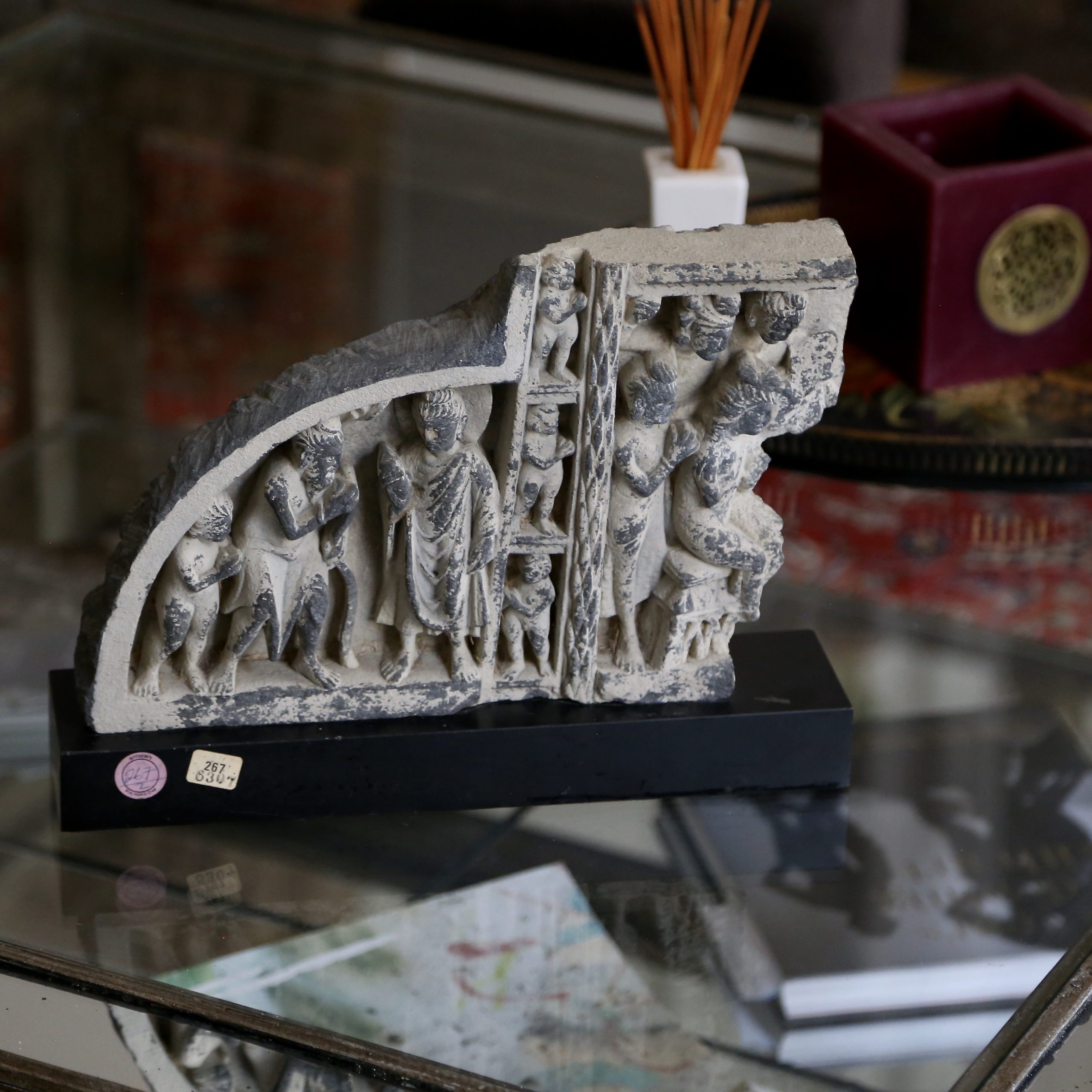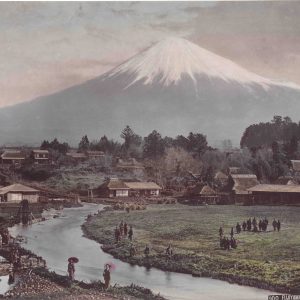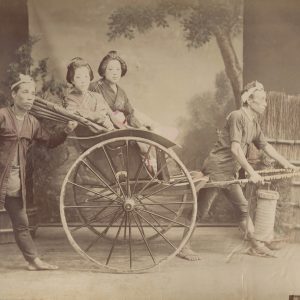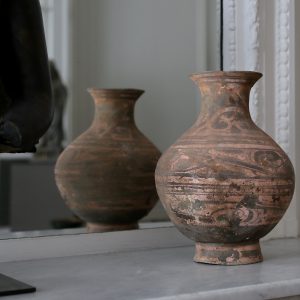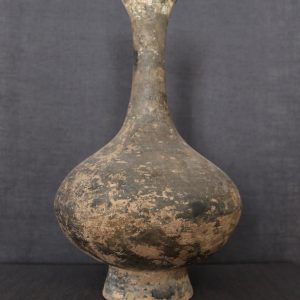Buddhist scene with Buddha and Kāśyapa
Schist
Ancient province of Gandhāra
2nd-3rd century
H. 20 cm or 7 7/8 in
Description
This pleasant schist bas-relief dates from the flourishing period of Gandhāra, between the 2nd and 3rd centuries AD. The iconography of the Buddha in human form was established and developed by the Gandhāra school in northern India. This work was probably part of a door element or decorative set in a Gandhāra monastery. It illustrates an episode of the historical Buddha’s life through two narrative scenes separated by a band with niches in which putti are represented, testimony of the Greco-Roman influence. On the right-hand side of the relief, the historical Buddha and Kāśyapa, the future disciple of the holy man, are sculpted in a naturalistic style, along with a child. The left-hand side, although fragmentary, appears to illustrate a scene of quarrel, and may refer to a specific event in the Buddha’s life, during which his sanctity is disputed in Uruvilvā, in the community of Kāśyapa.
Condition report:
The work is in good condition. It was originally part of a larger stele. This fragment is still covered with a layer of stucco.
Provenance: Private collection, United States. Sotheby’s, New York, 1992.

